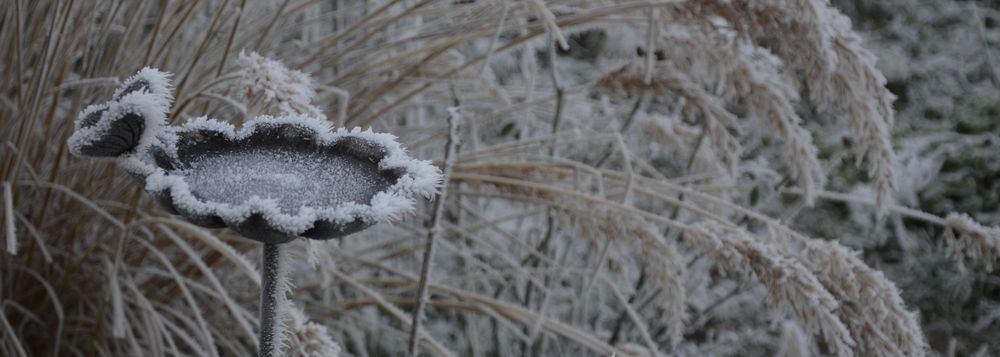
Another year has left its traces in our lives, some of those traces have been even more unexpected than the ones left by the two previous years.
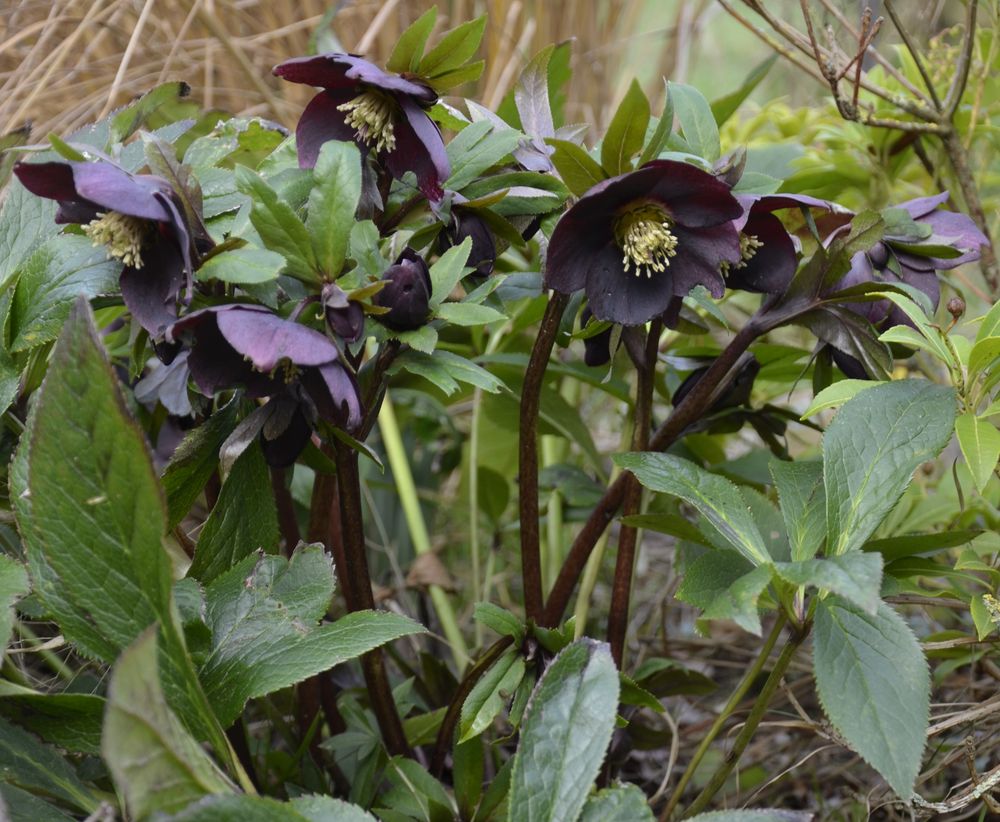
Some of our hellebores have been in bloom since December. They are wonderful companions during the not so colourful months of the year.

The daffodils in the centre of the circular bed are amongst the first in spring to bloom, followed closely by the fluffy Warminster broom. The white daffodils always come a little later than the yellow ones.


This year was bit of a challenge for the lavender crescent. There was not so much rain and the lavender has not been planted here that long ago. In autumn it turned out that cockchafer grubs had made themselves comfortable within the roots of some of the lavender plants happily chewing away on them.

This is the first of our standard medlar trees. We consider ourselves lucky in that we came across three of them. Nurseries normally offer cultivars of medlars and those cultivars usually would be grafted on rootstock of hawthorn. These three standard trees appear to not be grafted onto a rootstock but seem to be grown from seedlings. Medlars are rooting deeply in the soil so once established they can cope with dry periods. We planted the first one in late April, not expecting to see another year with less-than-average rain during the season. Despite regular watering it took until summer before the tree at last showed growth and we knew it had settled in and started to send its roots down. The two others were planted in autumn.
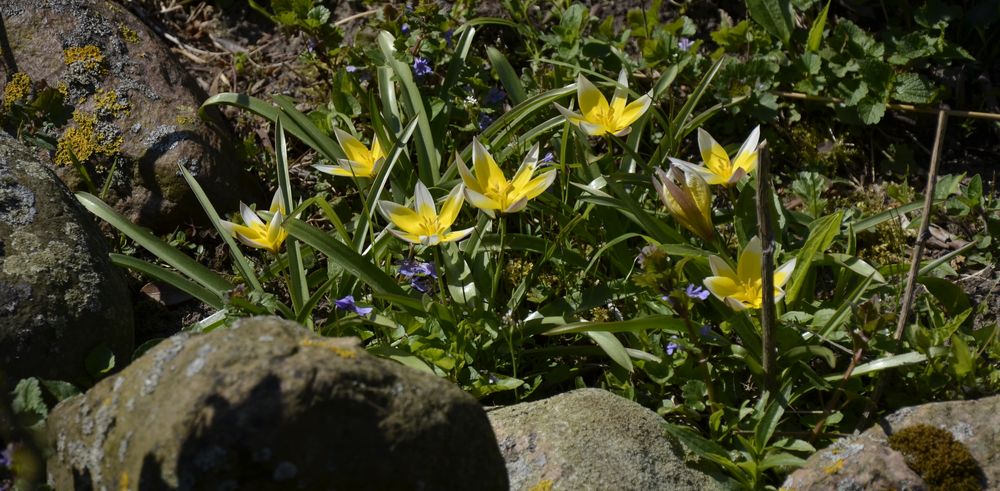
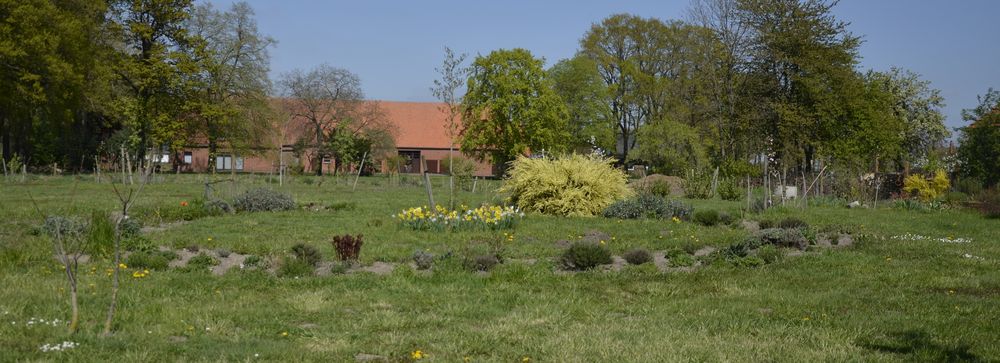
The Warminster broom at its best. The whole bush is humming with bees and bumble bees and the sparrows love to play hide&seek in it.
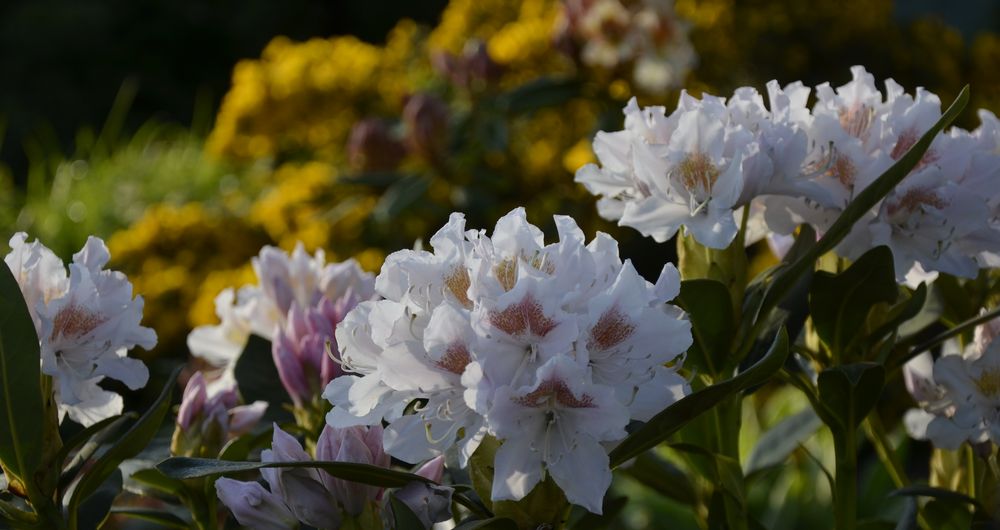
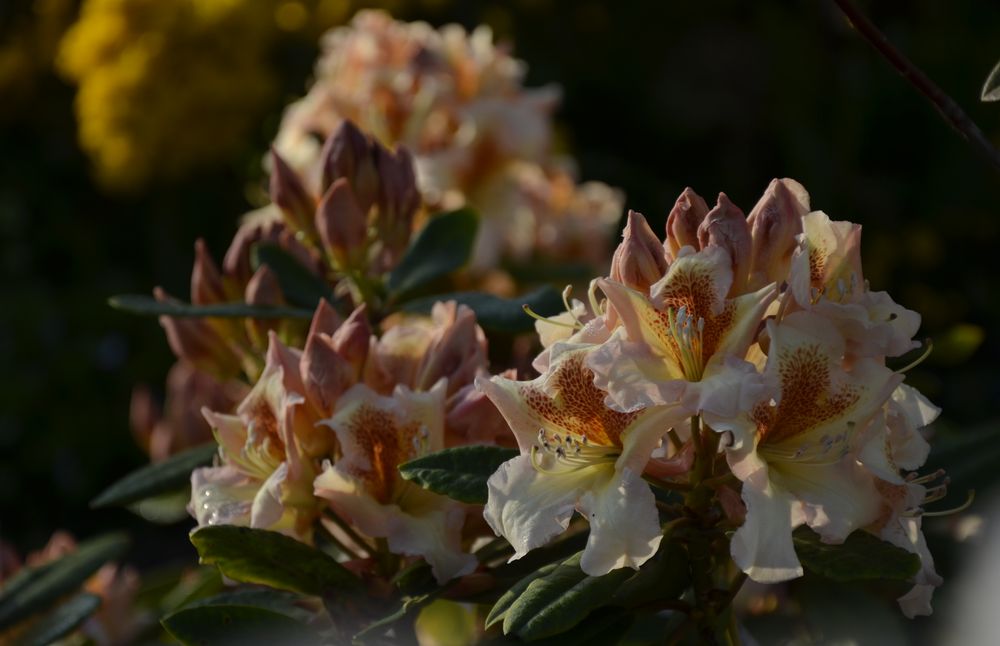
During the two lockdown years we unearthed just over 12 tons of rubble in the plot behind the former pig stable and created a bed for our rhododendrons there. Meanwhile the bushes have settled in really well. Cunningham’s Snow White has replaced Whitestone, which gave up for whatever reason. Bernstein has recovered after having been rather poorly.

We planted the shuttlecock fern with the rhododendrons. The place is the only spot that provides shade at least for some hours in the day. It is north of the old pig stable so the shadow of the small building falls on to the bed.

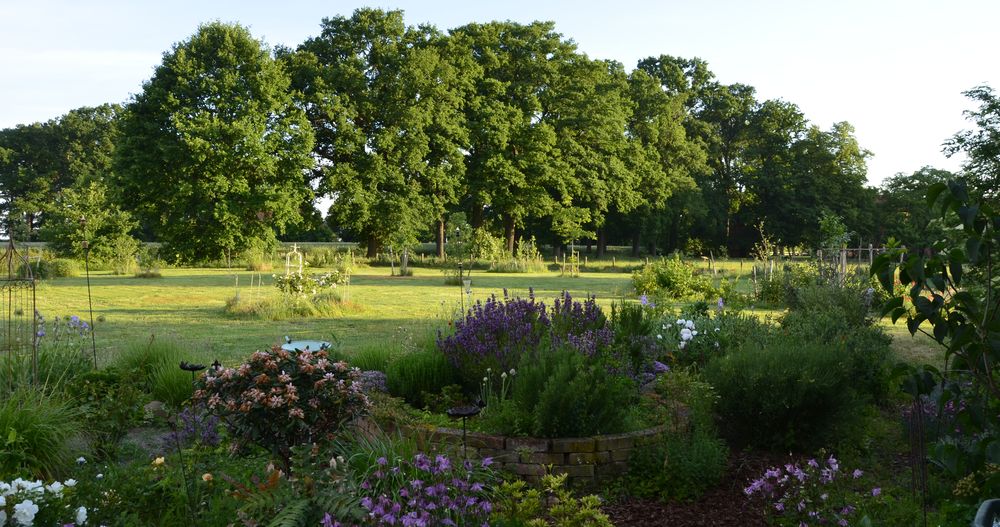
This is a moment when the drought had not struck yet. There are rhododendrons in bloom and granny’s bonnets and sage and oriental poppies – plus the roses are just starting to show off.

In June the door bell rang and there was the postie with a huge parcel. Out came, securely packed, Albert & Percy, the two Galahs or pink and grey cockatoos. My dear friend Marianne from Bendigo in Australia had made them as a big big surprise for me. Marianne has been crocheting all sorts of animals lately. She had told me about the turtle and the penguin and a huge owl and the little snails – but she never revealed she was working on those two fellows. Here they sit in front of the paeony and have a look around the garden, nibbling some grass. They are now good company in the studio. Thank you, Marianne!
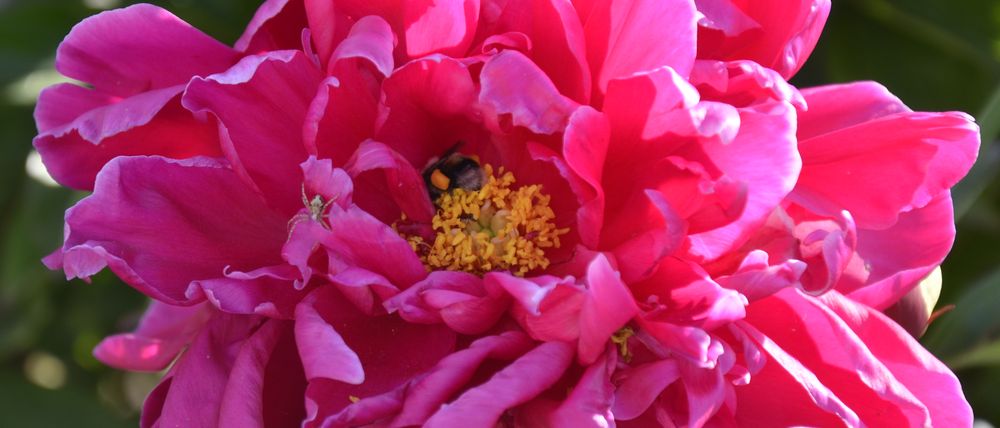
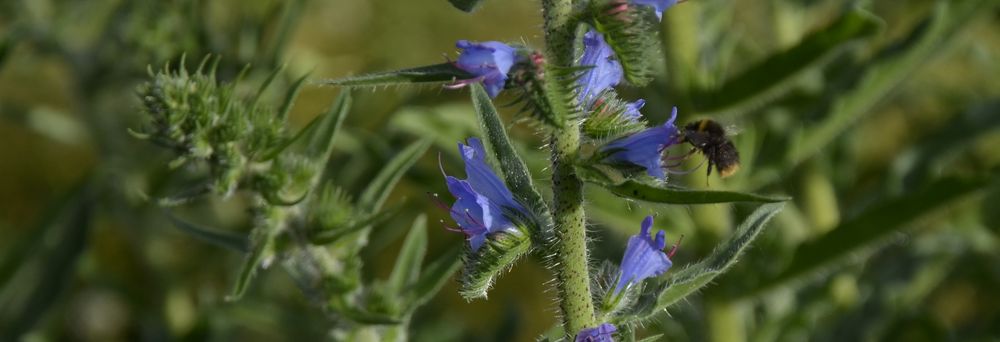
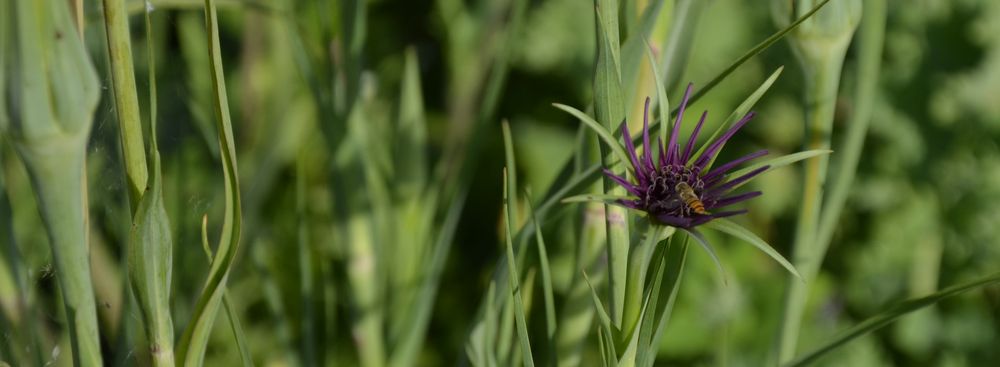
Purple salsify or Oyster plants are biennial. I had sown around half a dozen this spring to have them in bloom next summer. Unfortunately they turned out to be to the liking of our resident root vole and it ate them one by one and left not a single one. So we won’t see any of those flowers in 2023.

Hover flies often look like wasps. This is what is called mimikry: the flies try to look dangerous while being totally harmless. The adult insects are a treasure as pollinators and in many species their larvae prey on insect pests like aphids (green and black flies) and leafhoppers. A number of species do service in biological pest control, not just by feeding on insect pests. On doing so they also reduce the risk of cultivated plants getting infected by diseases spread by aphids or other insect pests. Some larvae live in aquatic environments and can purify water. Hover flies can be attracted by planting a lot of flowers. They particularly love yellow, but will also go for parsley, chamomille and buckwheat. In our garden they are regulars on all the roses with open flowers like Jacqueline du Pres, beach rose, burnet rose, dog rose and field rose – all the basic hedge rose species.

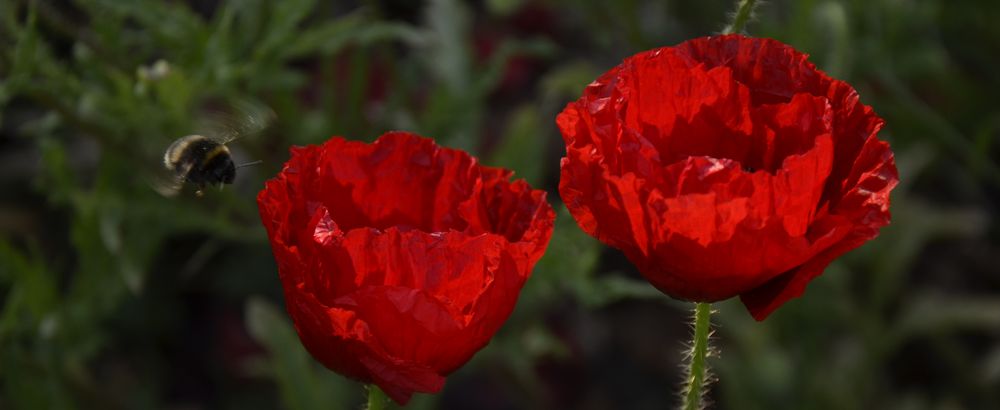
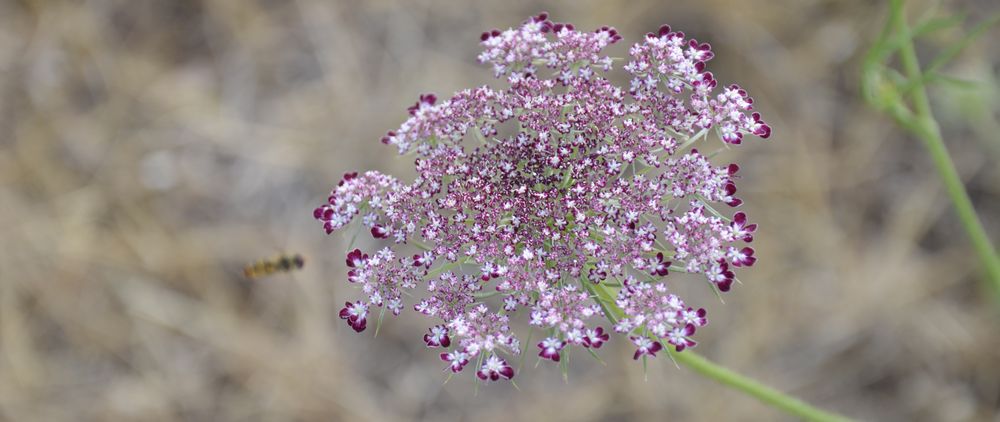
Wild carrots usually have white flowers, some have a hue of pink, many a single almost black flower in the centre. This special individual turned out burgundy. We collected some of the seeds and will try to grow more of them next year – permit they turn out the same colour.
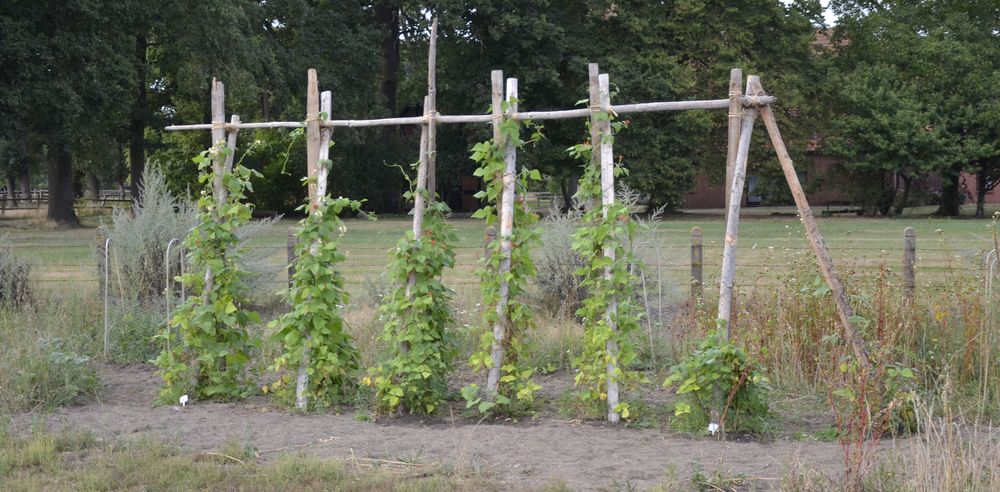
2022 was not a perfect year for growing beans. In spring the nights remained pretty cold for a long time, something beans are not so fond of: they want the soil having warmed after winter for germination. Thus they started growing rather late, and then got hit by the prolonged dry period. Despite regular watering the harvest was less than last year.
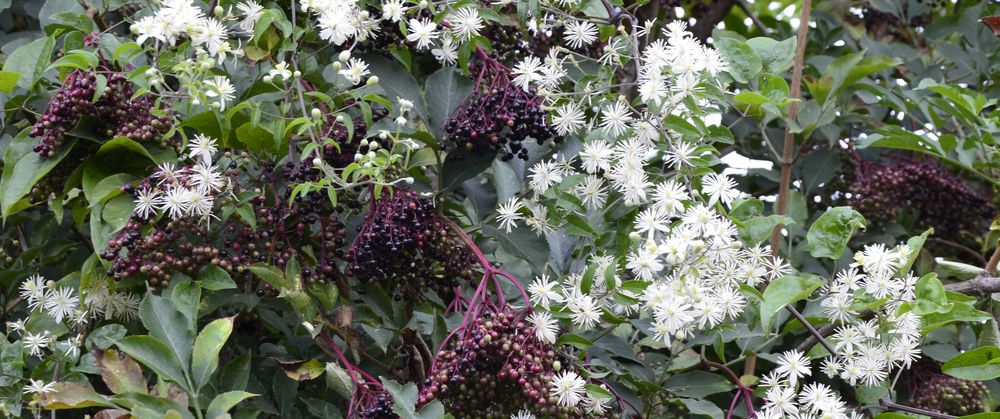

Our pear tree „Geishirtle“ was as full with pears as it possibly could be. And the fruit were delicious beyond words.
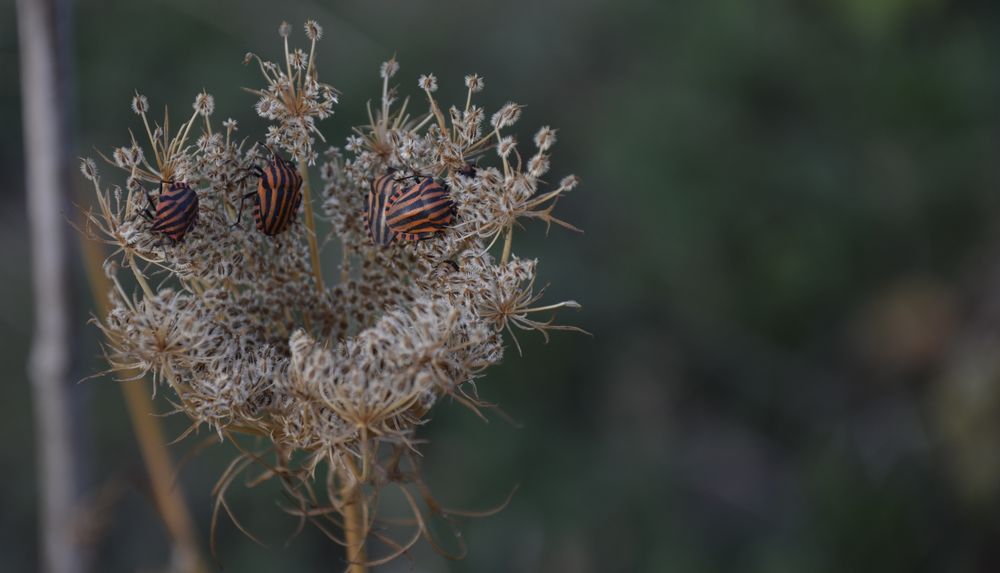
The wild carrots have made themselves very at home in our garden. They are lovely when in bloom, but I like their seed heads best. They will curl inwards to shelter the seeds for the time when the ripen. Once the seeds are ready to be dispersed the curled in baskets open up again. In the meantime the shield bugs decorate the delicate structure.

Our pear tree „Gute Luise“ provided a nice harvest, too. The standard tree has been planted in autumn 2016.
The bumper crop came from the plum trees that have been here long before we moved in. We took down kilo after kilo. I cooked them into jam and various sorts of tasty chutney.
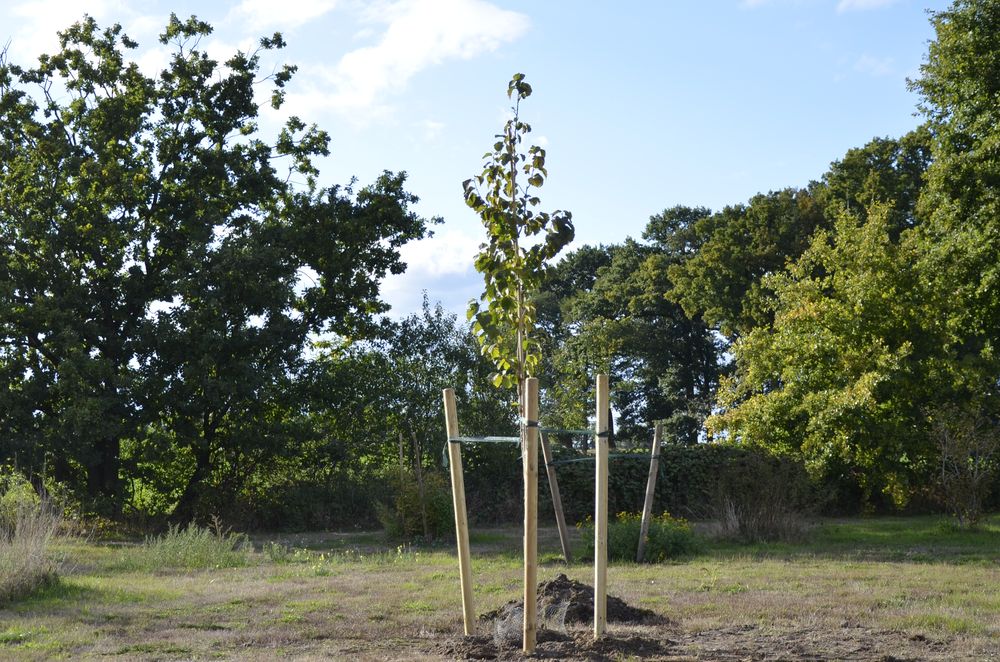
This is a dream come true: in autumn we planted a Turkish hazel. For quite some time we had been considering having one of those trees. It is a standard tree and will gradually grow into a proper tree with a slender crown. It is drought resistant and should be able to cope well with a climate changing towards more heat and less rain, while still being fully hardy.
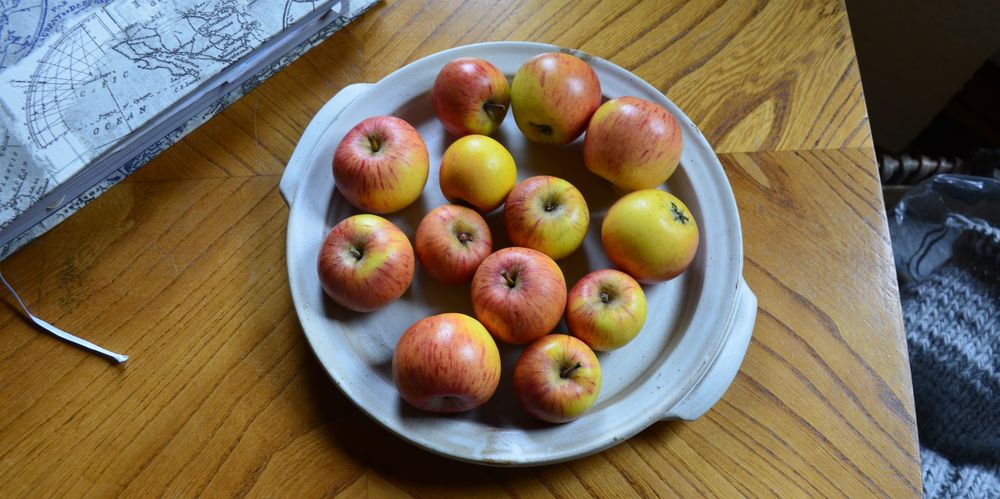
Our apple „Goldparmäne“ is a half standard tree and has started bearing fruit last year. The apples are tasty and spotless while still somewhat small.

In October we acquired a bucket full of mycorrhiza. We vaccinated the soil around the roots of our trees with this mixture of fungi. If all goes as planned this will make it easier for the tree to grow in the poor sandy soil we have. We were lucky in that this autumn the soil remained warm for quite long so the mycorrhiza fungi could spread and grow nicely before winter came.

It was another year of many quinces though not quite as many as last year. We have now discovered a few more possibilities to use quinces, one is a very fruity chicken curry.


Elaeagnus x submacrophylla (formerly known as E. x ebbingei) is a hybrid between macrophylla and pungens. It is evergreen in mild conditions, in our garden it might shed its leaves in spring when the new ones appear. In February 2021 it froze almost totally back during a cold spell of around -20 degrees. Miraculously it started growing back in summer 2021 and has recovered within just a year. Like Hippophae (Buckthorn), the genus Elaeagnus is known to live in association with diazotroph microorganisms (Frankia from the group of actinomycetes), that collect nitrogen from air and thus improve soil quality. In places Elaeagnus is planted within orchards to improve the performance of the fruit trees by rising Nitrogen levels in the soil and thus providing natural fertilizer.

As to vegetables there is more to come next year: we decided to prepare a new bed for vegetables and discontinue one that has been not so much fun to work in due to a mass of very small rubble in there. It is bits and pieces of roof tiles, but the bits are so small that it is virtually impossible to sort them out of the soil. We will use this bed for sunflowers to make a feast for the goldfinches.

As I write this we brave for a night of -11 degrees. It is mid December and unusually cold for the time of year. Here we have no snow at all and some of our kale is not amused about the freeze. The Siberian variety is happy (after having suffered in the 30 degrees of summer and then made a full recovery). But the Galizian variety very much looks like this sort of cold is not to its liking at all. The little birds keep raiding the feeders. The woodpeckers are back for food. And we all hope for some more moderate temperatures rather sooner than later.
